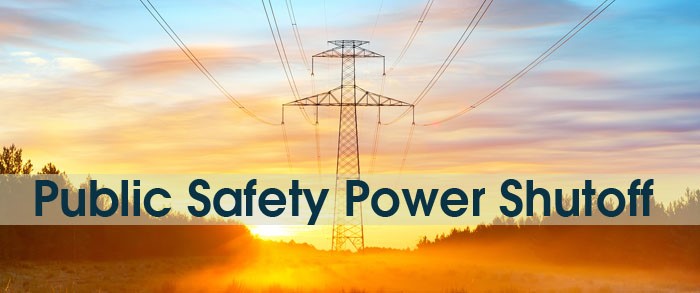| | | Emergency Preparedness - Public Safety Power Shutoffs
What is a Public Safety Power Shutoff (PSPS)?
PG&E is implementing additional precautionary measures to help reduce the risk of wildfires and may need to turn off power during extreme weather or fire conditions. A shutoff can occur depending on local fire danger conditions, such as a Red Flag Warning, high wind gusts, low humidity, and dry vegetation. In most cases, PG&E expects to be able to restore power within 24 to 48 hours after extreme weather has passed. However, depending on weather conditions or if any repairs are needed, outages could last multiple days – so it’s important you and your family have an emergency plan in place.
When does PG&E activate a Public Safety Power Shutoff?
PG&E activates the Public Safety Power Shutoff (PSPS) when extreme fire danger conditions are forecasted. These include: - A Red Flag Warning declared by National Weather Service
- High winds and high wind gusts, generally above 25 mph
- Dry vegetation
- Fire Threat
How do I know if my residence will be affected? - Register for Alert Solano to get alerts on power shutoffs and other emergency notifications.
- If you have medical devices, sign up for the PG&E Medical Baseline Program.
- Make sure your contact information with PG&E is updated.
- Click on the PG&E Service Impact Map and type in your address on the search box to find out if your service will be impacted.
What can I do to prepare for a Public Safety Power Shutoff?
It is important to prepare an emergency plan in advance in the event your family is affected by a power shutoff – or any other emergency. - Have a personal safety plan in place for every member of your household (including pets).
- Plan for any medical needs like medications that need to be refrigerated or devices that require power.
- Build or restock your emergency supply kit, including food, water, flashlights, a radio, fresh batteries, first aid supplies and cash.
- Identify backup charging methods for phones.
- Learn how to manually open your garage door.
- If you own a backup generator, ensure it is ready to safely operate.
What if I’m dependent on electricity for a medical device?
If you rely on electric or battery-dependent medical technologies (breathing machines, power wheelchair, home oxygen or dialysis), you must have a plan in place for an extended power outage. Your plan should include: - Keeping emergency phone numbers handy
- Having a backup location where you can go
- Making sure PG&E is aware of your medical device
- Considering a safe backup power source such as a generator
- Establishing multiple people who know how to operate equipment and backup systems
Click on the links below to help you prepare for Public Safety Power Shutoffs and for other emergencies: - Power Outage Safety (link)
- Residents with Medical Devices (link)
- Residents with Refrigerated Medications (link)
- Food Safety (link)
- Breast Pump Alternatives for Pumping Mothers (link)
- Protecting Frozen Breastmilk (link)
Other Resources - Public Safety Power Shutoff (PG&E)
- Preparing for Power Outages (Ready.gov)
- Power Sources (CDC)
|
| | | |